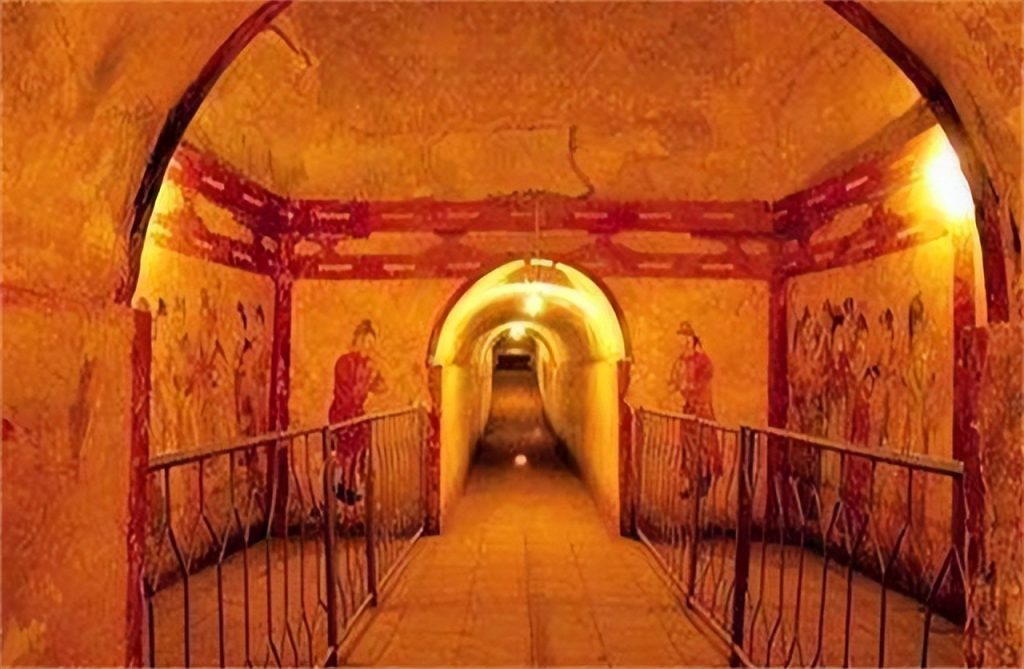In the autumn of 1958, a group of workers near Qianling, Shaanxi, stumbled upon something extraordinary. While blasting rocks for road construction, they uncovered a hidden tomb. What lay inside would leave archaeologists and historians in awe for decades to come.

When experts finally gained access, they discovered an underground palace rather than a mere tomb. Inside, golden treasures, exquisite ceramics, and life-sized stone warriors stood as silent sentinels. Yet the most astonishing sight was a skeleton seated atop the treasure hoard. Was it the tomb’s owner or an intruder? The answer shocked everyone—it was a thousand-year-old grave robber!
The Royal Tomb and Its Tragic Inhabitants
Further investigations revealed that this was no ordinary tomb—it belonged to Princess Yongtai, the granddaughter of the formidable Empress Wu Zetian. Born Li Xianhui, she was the daughter of Emperor Zhongzong and Empress Wei, making her a key figure in Tang Dynasty politics. However, her life was cut tragically short at the tender age of 17.
Official historical records provide two accounts of her death. Some say she was forced to take her own life by her own grandmother, Wu Zetian, after criticizing the corrupt state of the court. Others claim she died due to childbirth complications, as confirmed by modern forensic analysis of her skeletal remains.
But beyond the tragic end of the princess, another mystery unfolded—the presence of an unidentified male skeleton in the tomb. The man was clutching a tortoiseshell inscribed with the words: “Zhi Min Yongtai, forever and ever.” This hinted at a love story lost to time.
A Forbidden Love and a Heartbroken Poet
Further research identified the mysterious man as Song Zhi Min, the brother of the famous poet Song Zhiwen. Unlike his politically savvy sibling, Song Zhi Min was a hopeless romantic, deeply in love with Princess Yongtai. The two were torn apart when the princess was forced into a political marriage with Wu Zetian’s nephew.
Devastated, Song Zhi Min lived in sorrow. When he learned of Yongtai’s premature death, he made a desperate decision—he dug his way into her tomb and chose to die by her side. His final act of devotion was carving their names onto the tortoiseshell, ensuring their love story would be remembered.
The Skeleton on the Treasure: A Greedy Fate
But what about the skeleton sitting on the treasure? This was no lovesick poet—it was a burglar who met an unfortunate fate. Evidence suggests that centuries after the princess’s burial, a tomb raider attempted to loot the riches inside. Whether trapped by a collapsing tunnel, poisoned by ancient traps, or simply unable to escape, he perished within the chamber, forever frozen in time atop the gold he sought to steal.
Cultural Legacy and Modern Reflections
The tale of Princess Yongtai and Song Zhi Min is one of the most poignant love stories in Chinese history. It echoes the timeless struggle between personal desire and political duty, a theme that still resonates today. The discovery of this tomb not only sheds light on Tang Dynasty burial customs but also reminds us that love, once set in motion, can defy even death.
The saying “Most ruthless is the royal family” from Tang poet Zhang Hu rings true, as the emperor’s court often dictated the fates of its members. Yet, in the face of such cruelty, love found a way to leave its mark—etched on a tortoiseshell, hidden in a tomb, and uncovered a millennium later.

No comments yet.